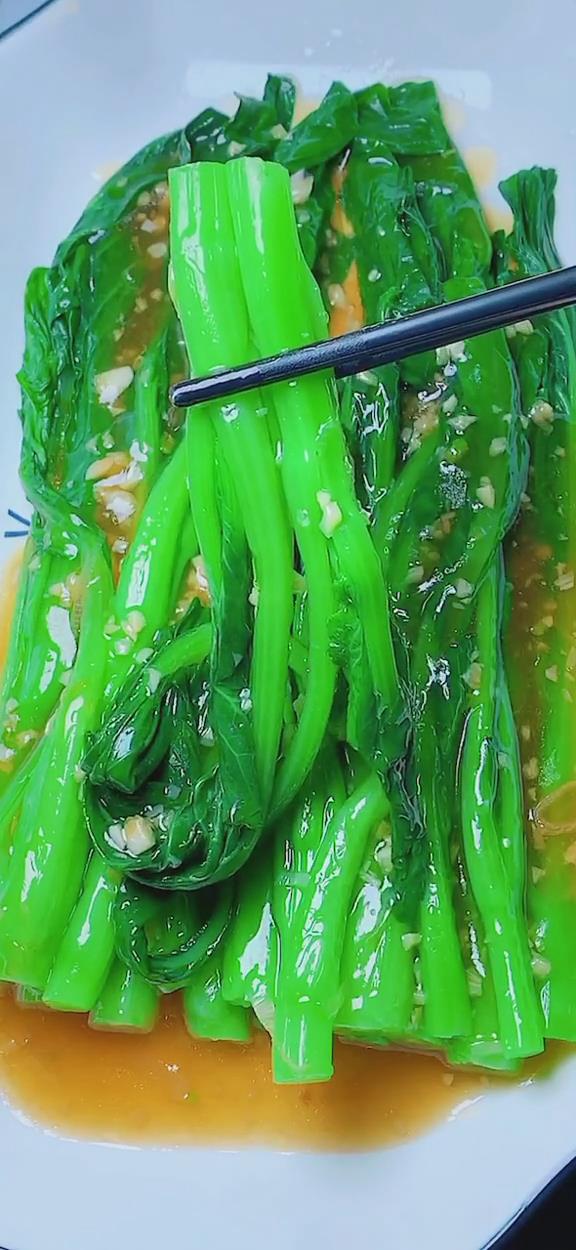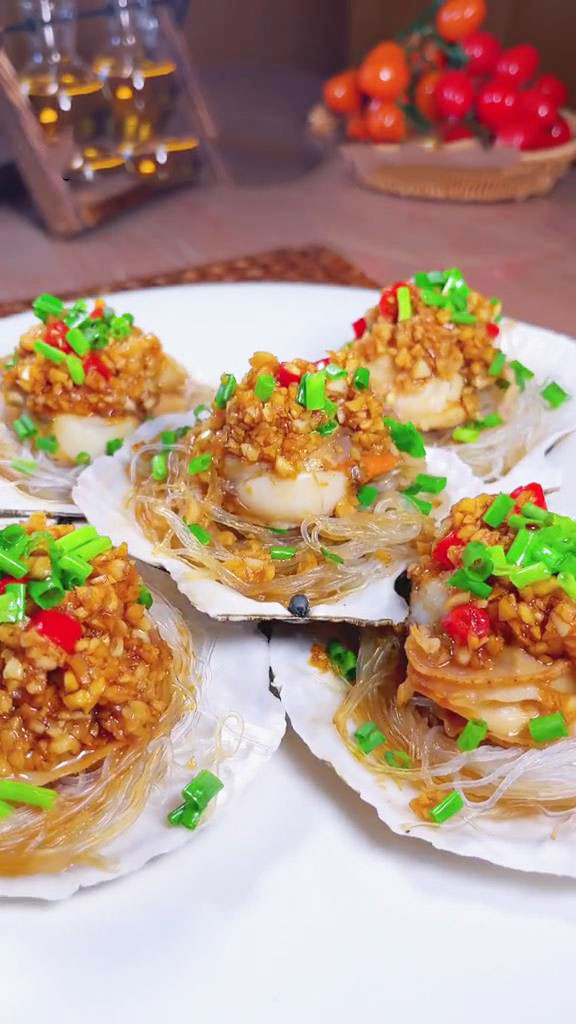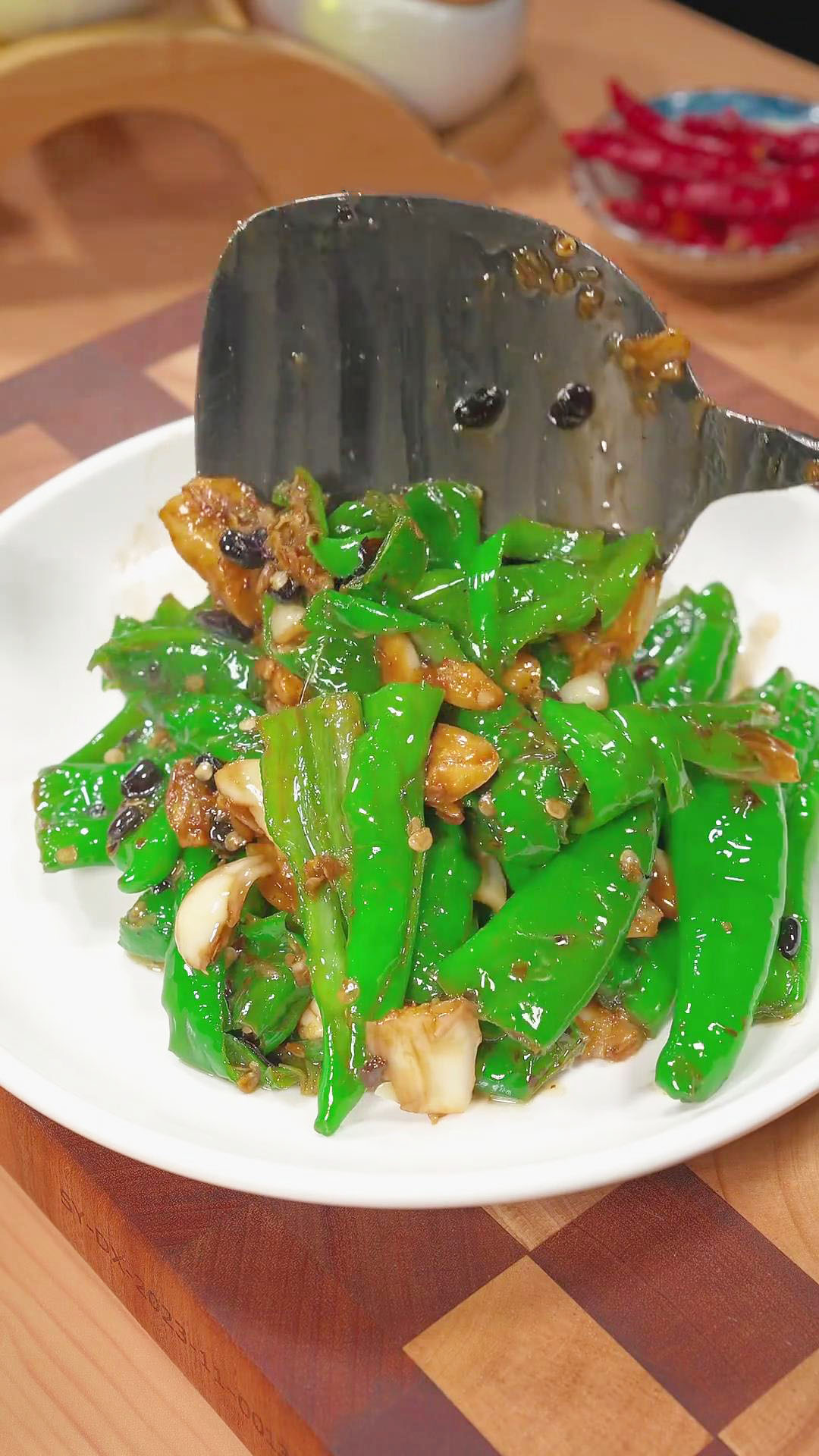This post may contain affiliate links. Please read our disclosure policy.
Yu Choy Sum is a popular Chinese side dish commonly served at dim sum restaurants. It’s a quick and easy dish you can make at home.
No frying or tedious preparation – just boil the yu choy, pour the savory sauce, and you’re done!
Serve Yu Choy Sum with any main dish to have a hearty meal. Start making this dish with my easy-to-follow recipe.
- What Is Yu Choy Sum?
- Why Make Homemade Yu Choy Sum?
- How To Store And Reheat Yu Choy Sum
- Expert Tips For A Successful Yu Choy Sum
- Cooking Tools And Ingredients For Yu Choy Sum
- How To Cook Yu Choy Sum
What Is Yu Choy Sum?
Yu choy or choy sum is a green leafy vegetable known as Chinese flowering cabbage. You can identify yu choy with its small green leaves and green stalks, sometimes with yellow flowers still attached. All parts of yu choy, including the flowers, are edible.
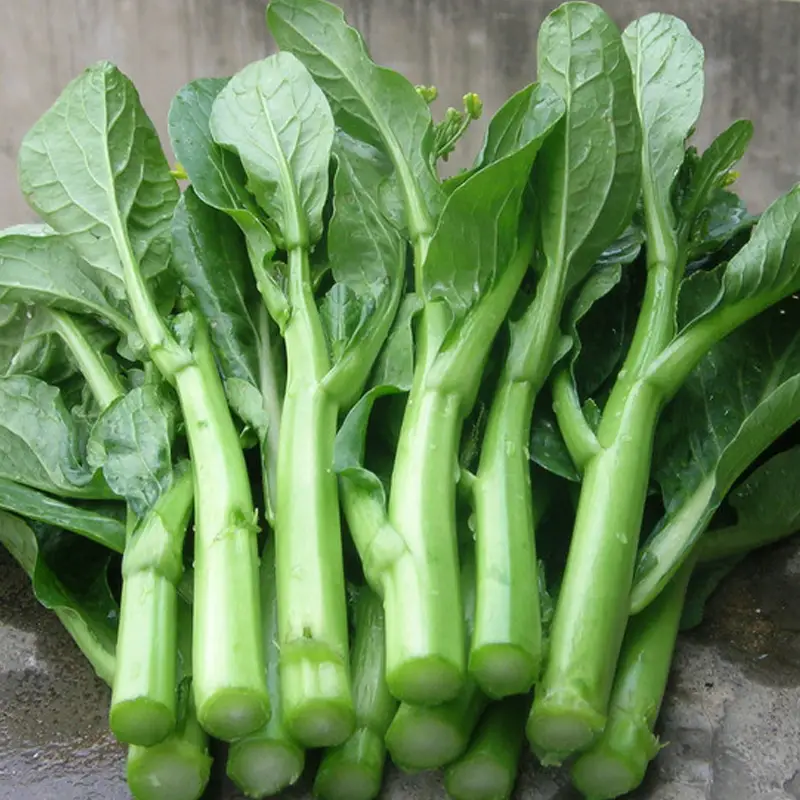
It has a sweet and mildly bitter taste and a firm and crunchy texture. Yu choy is quite similar to bok choy and Chinese broccoli gai la in terms of taste and appearance. These vegetables are great alternatives to this recipe if you don’t have yu choy.
In my recipe, yu choy is prepared by boiling until cooked. Then, you pour a savory sauce all over the cooked yu choy.
I made the sauce with garlic, light soy sauce, oyster sauce, cornstarch, salt, chicken bouillon powder, and water. Alternatively, you can explore my simple stir-fried yu choy recipe for a quick and delicious dish.
Why Make Homemade Yu Choy Sum?
Yu choy sum is a great addition to any meal plan for various reasons. It is a healthy and delicious side dish best paired with other Chinese dishes, such as Tofu With Minced Pork & Mushrooms, Black Pepper Beef Stir-fry, and Homemade Ham Sui Gok.
Yu choy is a power vegetable packed with Vitamins A, B, and C, as well as an excellent source of iron, magnesium, fiber, and calcium.

Aside from its health benefits, you will also love that it is super quick to cook and takes about 10 to 15 minutes to prepare.
Plus, the cooking method is easy since you only have to boil and leave it until the vegetables are cooked. The sauce is also a breeze to prepare by just mixing and simmering it until it thickens.
How To Store And Reheat Yu Choy Sum
For uncooked and unwashed yu choy, store it in the fridge for up to 5 days while wrapped in a paper bag or paper towel to keep it from moisture.
Moist or wet vegetables tend to rot fast and make the leaves soft and slimy. You also don’t want it to become too dry, so make sure to wrap it well while making sure it is not exposed in the fridge.
For leftover cooked yu choy sum, store it in the fridge in an airtight container for up to 3 days.
You can reheat it in the microwave for a few minutes. However, expect reheated yu choy sum to be much softer and less crispy.
Expert Tips For A Successful Yu Choy Sum
Have the most delicious and freshest yu choy sum by following my tips and recommendations. Listed below are some of my suggestions when picking out the best yu choy in the market, cooking techniques, and possible alternatives to an ingredient. Read this section first before cooking the dish.
- Yu choy: Yu choy comes in a variety of sizes. It varies on how mature they are. Try to find the ones with little flowering or no flowers. Yu choy with flowers tends to have a thicker stem, which takes longer to cook than its leaves. You don’t want to overcook the leaves, so I suggest peeling the lower stems of yu choy with flowers to cook faster. You can always choose regular yu choy without flowers since these are usually smaller and have thinner stems. When picking out yu choy, choose the ones with fresh green leaves and firm stems. Do not pick the ones that are dry, yellow, or brown.
- Prepare the yu choy: Before cooking yu choy, clean it thoroughly with water to remove dirt and soil. You can clean it with running water or soak it in a water-filled basin for 10 minutes. If there are dry or yellow parts, cut those as well before cooking.
- Cooking technique: In my recipe, the vegetables are cooked with boiling water. To avoid overcooking the vegetables after boiling, you can quickly blanch them with an ice bath or cold water. Blanching helps stop the vegetables from continuously cooking because of the retained heat when removed from boiling water. Aside from boiling, you can also stir-fry them with or without oil. Fry it for a few minutes and cover the pan to allow it to cook in steam. Moreover, make sure it is fried on low heat to gently cook it without damaging the leaves.
- Soy sauce substitute: Soy sauce can be substituted with tamari, liquid aminos, coconut aminos, or gluten-free soy sauce. Each type of soy sauce may have slight differences in taste, which can affect the overall flavor of yu choy sum.
- Oyster sauce substitute: You can substitute oyster sauce with fish sauce, hoisin sauce, or “oyster” flavored sauce for vegan sauce.
- Garlic substitute: Substitute 1 clove of garlic with 1/8 tsp of garlic powder or 1/4 tsp of granulated garlic. If you don’t have garlic, you can omit garlic from the recipe and just cook the sauce with the remaining ingredients. However, you will lose the garlicky flavor and just have a salty thick sauce.
- Cornstarch substitute: Cornstarch is only used as a thickening agent for the sauce. You can swap cornstarch with tapioca flour or potato starch. For 1 tbsp of cornstarch, substitute it with 2 tbsp of tapioca flour or 1 tbsp of potato starch. It’s technically fine to cook the sauce without any of the starches mentioned. However, the sauce will be runny and not thick.
Cooking Tools And Ingredients For Yu Choy Sum
Start cooking and prepare this kitchenware and ingredients. Get a pot or pan for boiling the vegetables and a mixing bowl to mix the sauce. Thankfully, it’s safe to say that the ingredients are pantry-friendly, so all that’s left to do is buy the freshest and greenest yu choy.
Kitchenware
- Pot or pan for boiling
- Knife or food processor to chop the garlic
- Mixing bowl
- Serving plate
Ingredients
For Boiling Yu Choy
- 1 tbsp salt
- 1 tbsp oil
- Water for boiling the vegetables
For The Sauce
- 10 garlic cloves (minced)
- 1 tbsp light soy sauce
- 1 tbsp oyster sauce
- 1 tbsp cornstarch
- 1 tsp salt
- 1 tsp chicken bouillon powder
- 50g water
How To Cook Yu Choy Sum
The recipe has two main parts: boil the vegetables and prepare the sauce. In my opinion, the only part that can be time-consuming is mincing the garlic cloves. However, you can make it easier by grinding it in a food processor rather than using the traditional knife.
As for the rest of the recipe, it only includes boiling the vegetables, simmering the sauce to thicken, and combining all the ingredients together. It’s a fast side dish best served with high protein meals such as Tofu With Minced Pork & Mushrooms and Black Pepper Beef Stir-fry. Follow my detailed steps below or you can watch my short tutorial video on Tiktok and Instagram.
Boil The Yu Choy Vegetables
Put water in a pot or pan and bring to a boil. Once the water boils, add 1 tbsp salt and 1 tbsp oil.
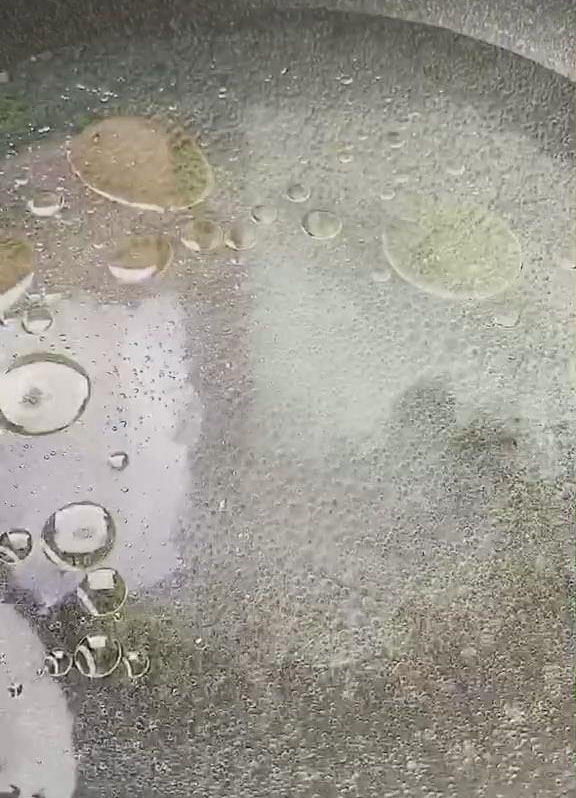
Then, add the yu choy and cook until the stems are tender and the leaves are soft but crisp. Cook for about 1 minute. Be careful not to overcook them, as you want to prevent them from being too soft and mushy.
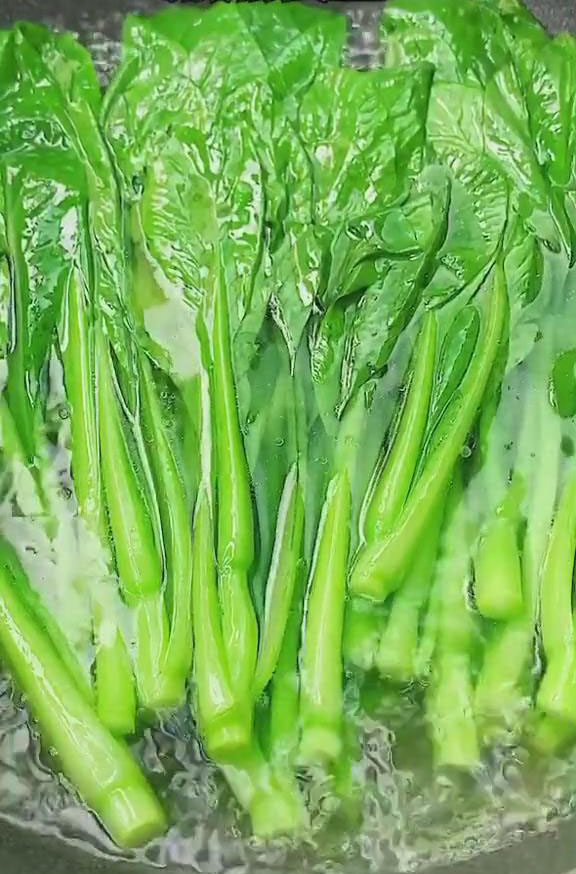
Once the vegetables are cooked, place them on a serving plate.
Prepare The Sauce
Next, prepare the sauce. Mince 10 garlic cloves using a knife or food processor.
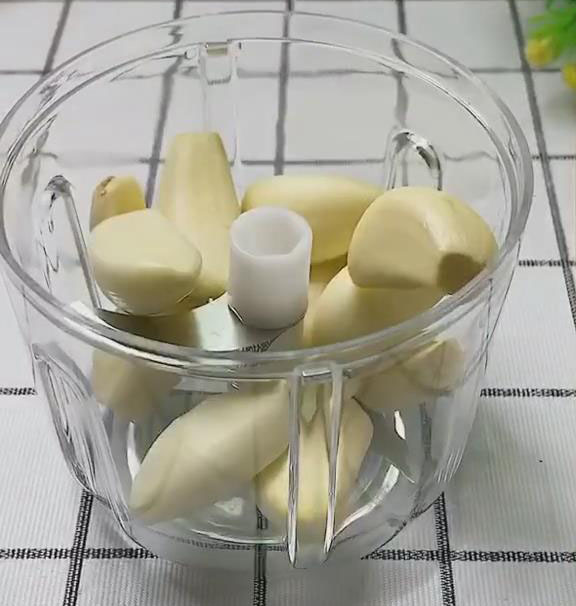
In a bowl, add the minced garlic cloves, 1 tbsp light soy sauce, 1 tbsp oyster sauce, 1 tbsp cornstarch, 1 tsp salt, 1 tsp chicken bouillon powder, and 50g water.
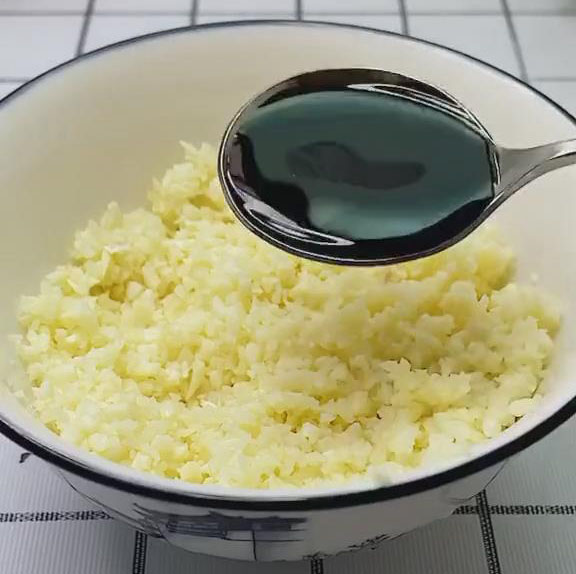
Mix the sauce well and pour it into the cooking pot.
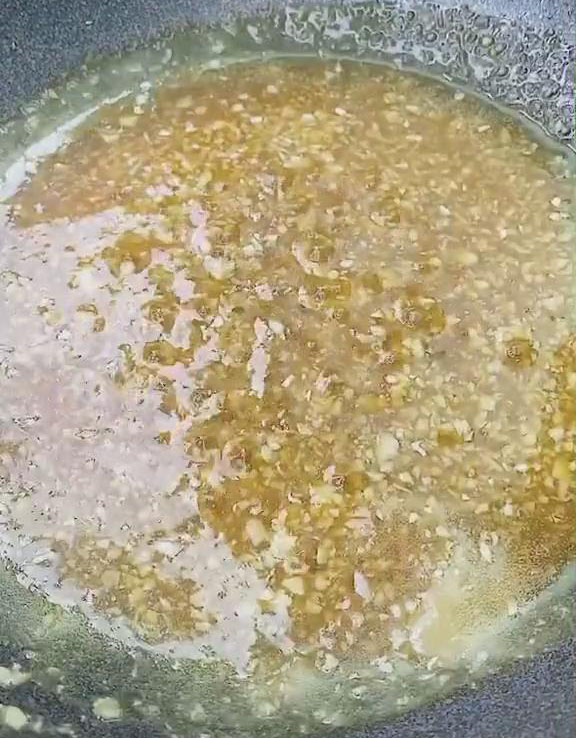
Cook the sauce on low heat until the sauce begins to simmer. Once the sauce simmers, pour the delicious sauce over the plate of yu choy and spread evenly.
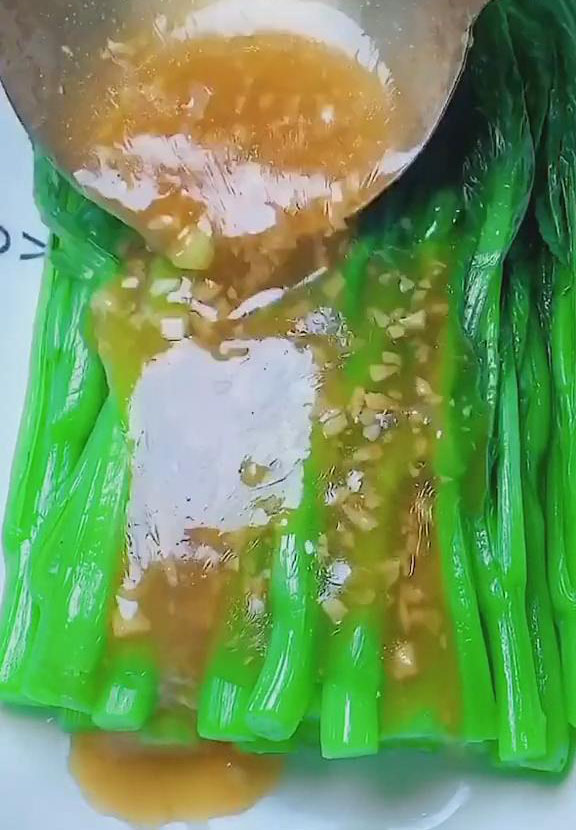
Serve while hot and fresh, and enjoy it with your favorite main dish.
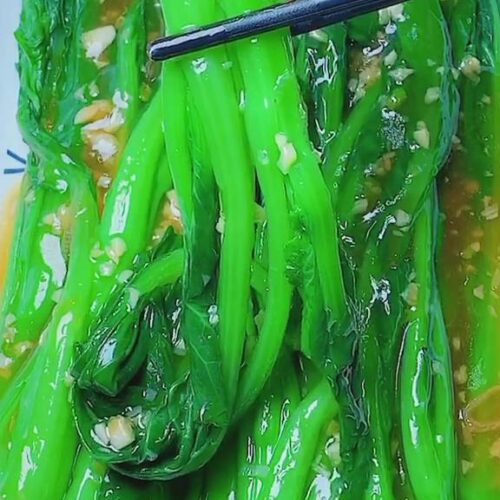
Quick & Easy Yu Choy Sum Recipe
Equipment
- Pot or pan for boiling
- Knife or food processor to chop the garlic
- Serving plate
Ingredients
For Boiling Yu Choy
- 1 tbsp salt
- 1 tbsp oil
- Water for boiling the vegetables
For The Sauce
- 10 garlic cloves minced
- 1 tbsp light soy sauce
- 1 tbsp oyster sauce
- 1 tbsp cornstarch
- 1 tsp salt
- 1 tsp chicken bouillon powder
- 50 g water
Instructions
Boil The Yu Choy Vegetables
- Put water in a pot or pan and bring to a boil.
- Once the water boils, add 1 tbsp salt and 1 tbsp oil.
- Then, add the yu choy and cook until the stems are tender and the leaves are soft but crisp. Cook for about 1 minute. Be careful not to overcook them, as you want to prevent them from being too soft and mushy.
- Once the vegetables are cooked, place them on a serving plate.
Prepare The Sauce
- Next, prepare the sauce. Mince 10 garlic cloves using a knife or food processor.
- In a bowl, add the minced garlic cloves, 1 tbsp light soy sauce, 1 tbsp oyster sauce, 1 tbsp cornstarch, 1 tsp salt, 1 tsp chicken bouillon powder, and 50g water.
- Mix the sauce well and pour it into the cooking pot.
- Cook the sauce on low heat until the sauce begins to simmer.
- Once the sauce simmers, pour the delicious sauce over the plate of yu choy and spread evenly.
- Serve while hot and fresh, and enjoy it with your favorite main dish.

